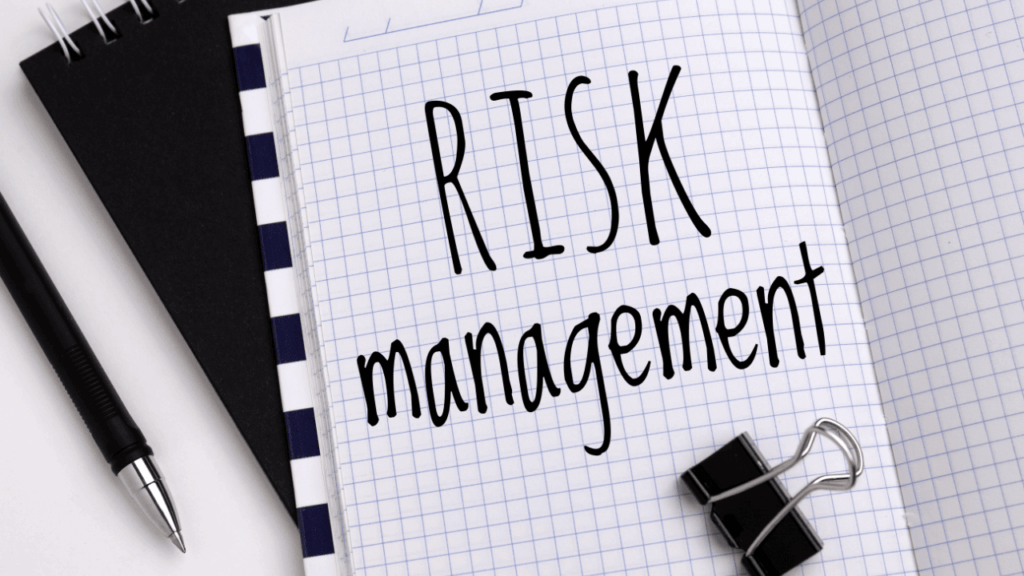Key Risk Management Models In Banking Explained
Since the banking sector is managed directly by financial processes, risk management models in banking are used to ensure the security of both customers and banks.
Banking, which is an important and privileged sector for national economies, has been under public supervision and control since its establishment.
Risk management in banking, which operates under numerous risks on a general, sectoral and micro basis, is of particular importance for the bank, its business partners, the sector and the national economy.
In risk management, which is carried out using numerous techniques on a product and portfolio basis in banks, risk management techniques recommended or required by the banking authority are also used. The risk matrix is one of the risk management techniques that the banking authority requires to be used.
Thanks to these models, banks ensure their financial stability while also ensuring that their customers’ assets are securely protected and ensuring their financial stability.
These models are mostly advanced mathematical and statistical tools that use different factors such as market risk and operational risk. Thanks to these tools, banks are optimized in their decision-making processes and facilitate the creation of the safest market for everyone.
In many reliable financial institutions operating on an international scale, risk management models in banking solutions, which use today’s advanced data analytics tools and artificial intelligence solutions, are being evaluated.
In this way, the security of both customers and banks is protected operationally and in the market.
What Are The Key Risk Management Models In Banking?

Today’s most common risk management models in banking examples can be divided into 4 main groups. Credit Risk Models, Market Risk Models, Operational Risk Models, and Liquidity Risk Management Models are 4 basic risk management models in banking examples.
Credit Risk Models are usually called “Basel II & III”. Market risk models are called “VaR – Value at Risk”. In addition to these, Operational Risk Models and Liquidity Risk Management Models are also common risk management models in banking examples.
Thanks to these basic models, banks measure risks and provide optimum evaluation and optimization. In today’s modern banking ecosystems, all risk factors are minimized and possible crises are prevented by integrating with artificial intelligence tools and advanced data analytics solutions.
How Do Risk Management Models In Banking Improve Stability?
Banks, just like investors, expose a certain amount of their assets to market risk. Thanks to today’s popular risk management models in banking applications, banks determine potential risks before possible crises and implement the best strategies.
This process provides the stability needed for banks. With these tools, banks determine their risk-based capital requirements and predict possible market fluctuations in advance, making them more resilient.
Risk management models in banking are used to optimize both the security of customers’ assets and the bank’s operational risk. Thanks to this process, stability is maintained for the bank itself, its customers, and the financial markets.
If risk management strategies are applied appropriately in a sector, a business, or an individual’s investment portfolio, stability is achieved. Although it may seem unnecessary at first glance, risk models should be used to maintain stability for banks.
Types Of Risk Management Models In Banking Explained
There are many different risk management models used in modern banking ecosystems today. The most popular types of risk management models in banking can be listed as follows:
- Credit Risk Models (PD, LGD, EAD)
- Liquidity Risk Management Models
- Market Risk Models (VaR, Monte Carlo Simulation)
- Operational Risk Models (AMA, BIA)
Thanks to these popular risk management models, banks analyze the risks related to their operations, market, and customers and create appropriate strategies.
Rapidly developing technological developments bring innovative solutions such as artificial intelligence tools and also improve risk management models in banking processes.
The most popular risk management models in banking can be explained as follows:
Credit Risk Models PD, LGD, and EAD are models in which the probability of the borrower not paying the loan, the loan not being evaluated appropriately, and the risk of the borrower or customer defaulting in credit processes are determined.
Another popular risk management model in banking examples is the liquidity risk management model. In these risk management models, short-term liabilities are the main focus, and auxiliary tools such as cash flow analysis are used.
Market risk management models provide banks with ideas about maximum loss rates by creating random and probable scenarios for banks. In addition, operational risk models such as BIA based on the bank’s total income are also widely used.
How Banks Use Risk Management Models To Prevent Financial Crises?
Many respected and reliable banks evaluate advanced risk management models in banking solutions to prevent possible financial crises. These models, which usually include up-to-date technologies, have early warning systems.
Credits, one of the most popular products or services of banks, are also among the areas where risk management models in banking are applied. In this process, banks analyze the debtor’s debt payment/sinking scenarios during the credit process.
Banks evaluate operational risk management models to prevent possible cyber-attacks or fraud. Thanks to these risk management models, banks develop simulations for many different scenarios and the banks’ resilience is tested under realistic market conditions.
The way to evaluate how a bank operates and how it performs in line with its objectives during a certain period requires examining the financial statements of the banks. The liabilities of the banks’ balance sheets show the sources of funds, and the assets show how these funds are used.
Banks operate to carry out their commercial activities not by using their own resources but by using foreign resources. The assets of banks generally consist of four main items. These are loans, securities (generally treasury papers), reserves and other assets.
Advantages Of Using Risk Management Models In Banking

One of the most important factors in ensuring both operational processes and customer security for financial institutions is the use of risk management models in banking.
Thanks to risk management models, banks are prepared for possible scenarios and prevent financial crises in advance or increase their resilience.
Banks that have increased resilience against different market conditions also protect customers’ assets more securely. It is already known that customer-focused strategies are more profitable today.
One of the important advantages of financial institutions benefiting from risk management models in banking solutions is better capital management. In this way, banks are resistant to possible liquidity crises and safely protect their customers’ assets.
When we look at the financial history of the world, we see that there have been many liquidity crises, and many financial institutions – including those that are respected and operate on an international scale – went bankrupt in these crises.
However, thanks to today’s advanced risk management models in banking solutions, possible liquidity crises are determined in advance and the necessary precautions are taken.
Common Challenges In Implementing Risk Management Models In Banking
Although today, advanced technologies can be used to take precautions against cybersecurity threats, there may be some difficulties in the implementation of risk management models in banking. The most common difficulties can be listed as follows:
- Data quality: Banks generally need a large and reliable data pool to benefit from risk management models in banking at the maximum level. It may not always be easy to access such data.
- Model accuracy: Constantly updating different risk management applications and integrating them with current technologies may lead to the use of the wrong model and the development of wrong strategies.
- Regulation incompatibilities: In addition to these, regulation compliance problems are also valid in the implementation of risk management models, as in almost every innovative banking solution.
Due to the different special conditions of different countries, models need to be customized for different regions and times.
The Role Of AI In Risk Management Models In Banking
One of the most popular technologies of recent years, machine learning technology, and one of the products of this technology, artificial intelligence tools, is making revolutionary changes in the banking sector.
Risk management models in banking, which are of critical importance for ensuring cyber security for banks, have also been using many different artificial intelligence solutions in recent years.
Artificial intelligence tools minimize many operational risks in the banking sector, especially thanks to their ability to analyze large amounts of data in a short time.
For example, the creation of special and different credit offers offered by a bank for each of its customers is a type of operation provided by artificial intelligence tools today.
In addition, the ability of artificial intelligence tools to detect possible cyber security threats in advance optimizes risk management processes.
How Do Risk Management Models In Banking Adapt To Market Changes?
Today, banks that want to adapt to rapidly changing market conditions are also evaluating risk management models in banking solutions.
Especially reputable and reliable banks update their strategies in case of possible global fluctuations with methods such as dynamic data analysis and stress tests.
With the help of advanced technological tools, it provides more realistic analyses by adapting to changes in both markets and regulations. When integrated with artificial intelligence tools, there will be no adaptation problem for banks no matter how fast market conditions change.
There are basically two policies that banks can implement against interest rate risk. The first is to protect against interest rate risk by equalizing the maturities as much as possible.
Although this method seems to be the most effective method to be applied against interest rate risk, it is almost impossible to implement.
Due to the nature of their business, banks are generally financial intermediaries that provide long-term credits despite low-term resources. On the other hand, insurance companies, for example, have long-term resources and asset structures.
The fact that banks try to equalize the maturities of their assets and liabilities can also negatively affect their profitability.
Regulatory Compliance And Risk Management Models In Banking

As with many tools in modern banking, regulatory compliance is an important issue in risk management models in banking solutions. Popular risk management models such as Basel II & III, and IFRS 9 are usually integrated with regulations suggested by local conditions.
In this way, it ensures that capital adequacy ratios are maintained at an optimum level. Country risk refers to the risk that the country’s administration will withhold the repayment amounts that foreign fund providers deserve due to the loans they have given or the securities they have purchased.
Banks do not have much power to do against country risks. In such cases, banks will either make improvements on the maturity of the debts or interest rates and reach an agreement with the country in question, or they will apply to national and/or international courts.
Although risk management models and technologies are officially recognized in many developed countries, unfortunately, I cannot claim that regulatory compliance has been eliminated for every country.
However, shortly, globalization and the development of artificial intelligence tools will eliminate regulatory compliance issues.
For example, if a bank does not provide credit to a customer who wants to get a 5-year home loan from the bank, saying that it will negatively affect the balance sheet structure, it will cause customer loss and decrease profitability.
For these reasons, although it is desirable to manage the balance sheet structure in a way that equalizes assets and liabilities due to interest rate risk, it is technically not possible because the amounts of loans and liabilities are not equal (due to factors such as required reserves and free reserves) as shown in our examples.
Future Trends In Risk Management Models In Banking
I can foresee that shortly, risk management models in banking solutions will also reach a higher level. The rapid development of data analytics and artificial intelligence technologies will enable this development.
The spread of today’s popular technologies, blockchain technology, the affordability of big data analytics tools, and the increase in the number of tools and services using artificial intelligence will enable risk management models in banking solutions to become more effective in the future.
These popular risk management models will gradually develop with artificial intelligence solutions and the solutions they offer will be more efficient for banks.
- Credit Risk Models such as PD, LGD, and EAD will make more accurate determinations. It will have a great impact on efficiency.
- Liquidity Risk Management Models analyze markets based on real data.
- Market Risk Models (VaR, Monte Carlo Simulation): Market conditions can be analyzed thanks to advanced algorithms.
- Operational Risk Models (AMA, BIA): Provides the most efficient management of bank security and operations.
See you in the next post,
Anil UZUN
